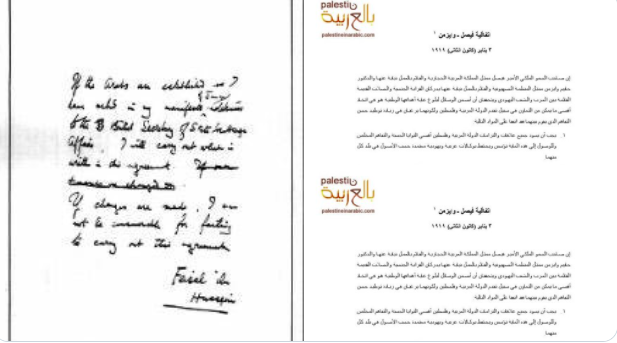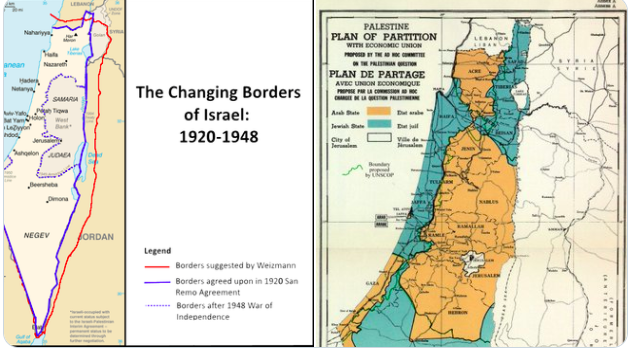BLAME GAME: The Palestinian Authority rejected all the International Solutions offered to them
by Khaled Hamoud Alshareef
PA and Hamas as pit in the faces of the ones who gave their lives…
Before World War I, the Middle East region, including the Ottoman Syria, was under the control of the Ottoman Empire for nearly 400 years.
Towards the end of the 19th century, Palestine, which was divided between the Mutasarrifate of Jerusalem, Syria Vilayet and Beirut Vilayet, was inhabited predominantly by Arab Muslims, Christians, Jews (predominantly Sephardic) and Druze, Circassians, both farmers and Bedouin.
The Ottoman Empire imposed a law called the “Ottoman Lands Law” in 1858, based on the collection of agricultural crop taxes, the law mandate if peasants were not able to pay the tax, the state will cease the lands if the owner didn’t cultivate it for three consecutive years.
A Lebanese family from Beirut called “Sursock” saw the opportunity in the Ottoman mandate and bought seventy-seven Palestinian villages from Palestinian farmers, which make up three percent of the land of Palestine.
Sursock is one of Beirut’s aristocratic families belonging to the Greek Orthodox community, and its name has been associated with the most prominent Lebanese events since the Nineteenth century.
The settlements were divided into four regions Haifa, Jaffa, Tiberias, and Lower Galilee Safed. The Jewish settlers came from Europe and Russia and built four colonies.
The first of the Bata Tikva is called Jewish Hope in 1879 CE. The second is the Rishon Luzion colony. The third colony is Zmarin and the fourth colony of Metulla in 1886 CE.
The Jewish colonies rolled under the eyes of the Ottoman Empire at that time until they reached Jerusalem.
During the reign of the King of Hijaz at the time, Sharif Hussein bin Ali, who had authority over Palestine founded by the Hashemites and lasted only nine years from 1916-1925. An agreement was agreed to allow the establishment of a homeland for the Jews. It was called the “Faisal-Weizmann” agreement, in exchange for allowing the Jews to establish a national homeland for them in Palestine.

The Arab-Israeli War of 1948
The Arab-Israeli War of 1948 broke out when five Arab nations invaded territory in the former Palestinian mandate immediately following the announcement of the independence of the state of Israel on May 14, 1948.
On November 29, 1947, the United Nations General Assembly approved the decision to divide Palestine into two Jewish and Arab (Palestinian) states and internationalize the Jerusalem region (under international rule).
The partition resolution was as follows: 56% for Jews. 43% for the Arabs. 1% for the Jerusalem area (which is an international region and placed under the mandate of the United Nations), and the decision included the borders between the two promised countries and identified stages in its implementation and recommendations for economic settlements between the two countries, basically putting an end to the conflict with consideration to the complex situation.

Israelis welcomed the partition project, while the Palestinian factions felt it was an unfair compromise. The National Liberation League, a communist group found by Emile Habibi, Emile Toma called for the acceptance of the partition plan.
The intensity of the fighting escalated after the partition decision in the beginning of 1948, and the Salvation Army was formed under the leadership of Fawzi Al-Qawuqji and influenced by Amin al-Husseini involving of Egypt and the seven members of the Arab League.
The fighting ended on January 7, 1949, after the Israeli army seized most of the Negev region and encircled Egyptian forces stationed around Fallujah in the northern Negev. After the end of the fighting, negotiations began on the Greek island of Rhodes.
The green line drew on the ground a division of Palestine into three parts, namely: “Israel, which represented the largest part with 78% of the area of historic Palestine, the West Bank and Gaza Strip by 22%.”
The tripartite aggression against Egypt (October 1956) launched by Israel, England and France because of the decision taken by President Gamal Abdel Nasser to nationalize the Suez Canal.
The aggression was stopped due the Soviet threat to interfere in the war, and then the American mediation to put an end to the military campaign. International emergency forces were placed on the common border between Egypt and Israel and the PA was founded.
The PA kept involving Arab countries in the conflict thanks to the surging popularity of the Arab Nationalist movements and the Islamist ideology through the region and the unchecked practices of the Israeli government at the time that made the situation a very explosive one.
The Samu incident or Battle of Samu was a large cross-border assault on 13 November 1966 by Israeli military on the Jordanian-controlled West Bank village of Samu in response to an al-Fatah land mine attack two days earlier near the West Bank border, which killed three soldiers.
Tensions reached a boiling point when a misleading intelligence report provided by the Soviet intelligence to Egyptian President Gamal Abdel Nasser, with the aim of pressuring Egypt to buy more Russian weapons, under the claim that Israel intends to attack Syria.
As a result, Gamal Abdel Nasser declared a state of emergency. In return, Israel declared a state of emergency in anticipation of a possible Egyptian attack. The battles began on June 5, 1967 with a sudden attack by the Israeli Air Force on Egyptian military airports where Israeli fighters flew at a low level to avoid capture by Egyptian radars.
The attack achieved its goals, and the Egyptian Air Force was neutralized, which allowed the Israeli ground forces to invade the Sinai Peninsula, backed by air cover.
The Egyptian army withdrew after incurring losses. Israel occupied the Gaza Strip, the Sinai Peninsula, the West Bank, and the Golan Heights in Syria, within six days.
Israel controlled four times the land mass. The UN Security Council issued Resolution 242 calling on Israel to withdraw its forces from the territories occupied in 1967.
Wars kept happening on smaller level until the 1973 war and the oil embargo that forced a political solution when the peace treaty between Egypt and Israel was signed 16 months after the visit of Egyptian President Anwar Sadat to Israel in 1977 after intense negotiations.
The main premise of the treaty were mutual recognition, the cessation of the state of war that had existed since the Arab-Israeli war of 1948, the normalization of relations and the complete withdrawal of Israel of its armed forces and civilians, from the Sinai Peninsula.
The Palestinian Authority rejected or danced around any peace offer, tens of thousands of Arabs died in the name of the Palestinian cause, yet the PA and Hamas as pit in the faces of the ones who gave their lives because they were deceived into partaking in the wars of others.
Khaled Homoud Alshareef holds PhD in Business and he earned Masters in Philosophy. He often writes about Islamism, Islamist factions and modern Terrorism. He tweets under @0khalodi0.



